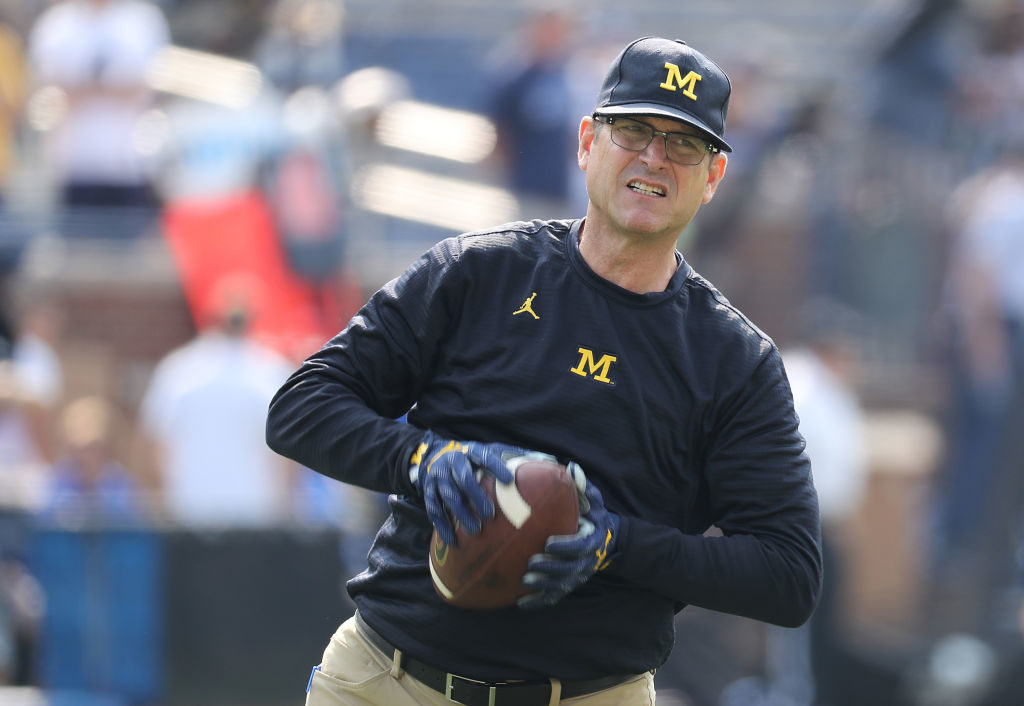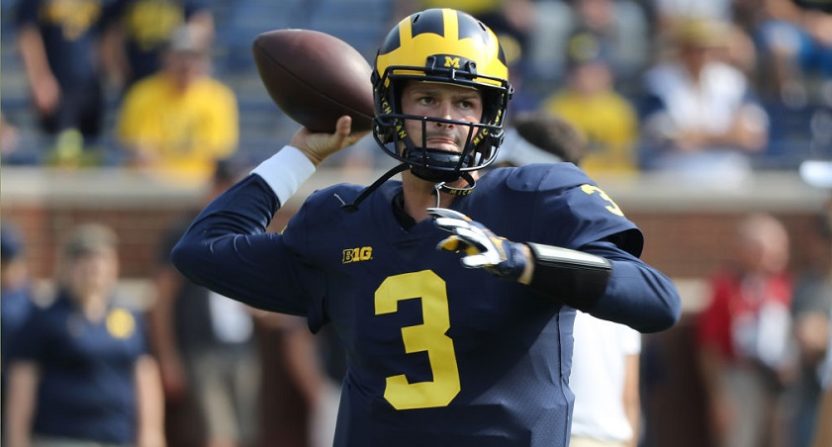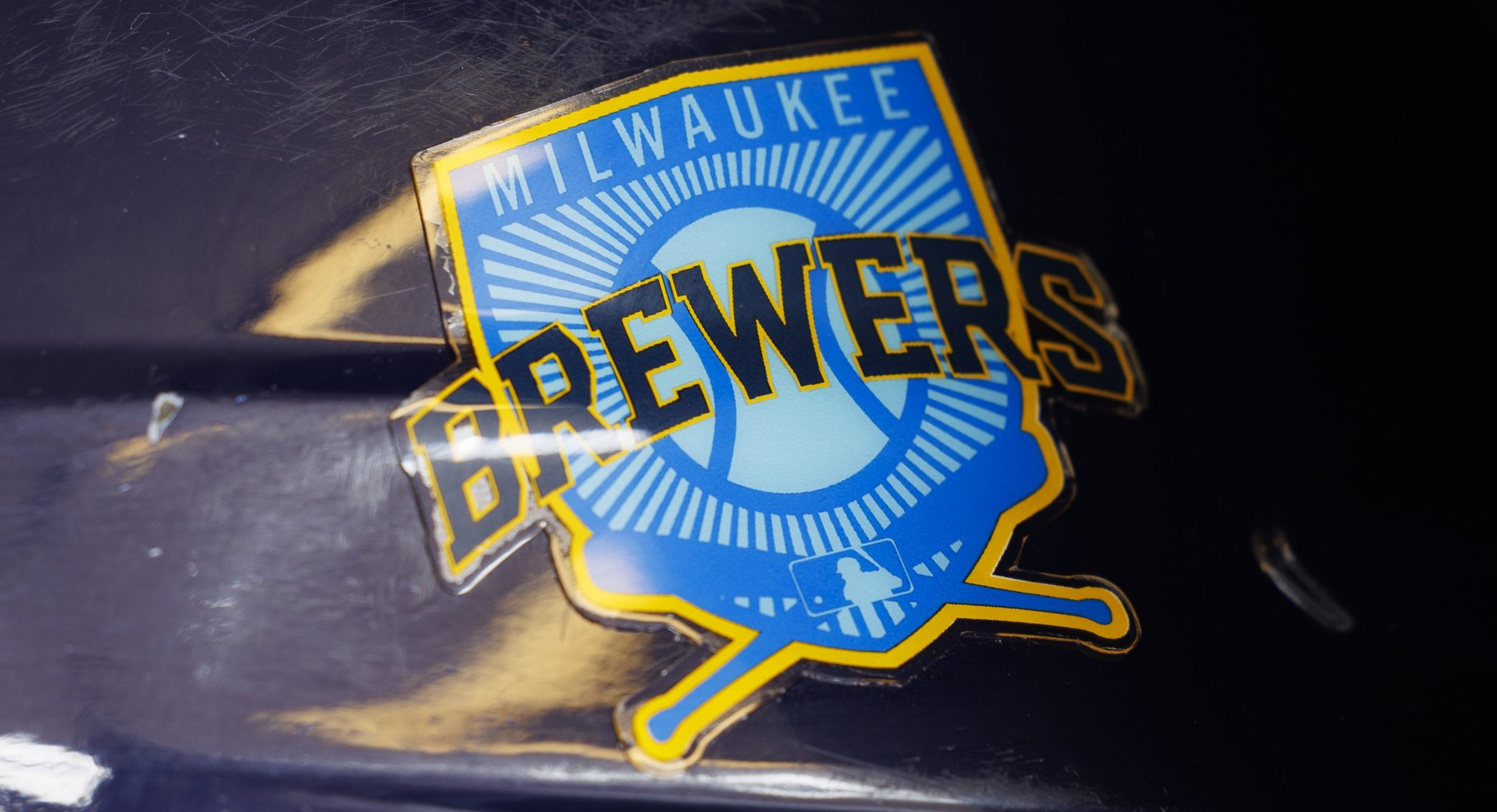As if the quarterback situation at Michigan was not intriguing enough, there is now a possibility that the Wolverines’ best possible solution may actually be going back to a player who had already intended to transfer out of the program. Wilton Speight, who announced his transfer from Michigan in November and has decided to hold off on announcing his destination until the summer, could reportedly consider returning to Ann Arbor to finish his college football career.
What a long, strange trip to go nowhere that would be. But as it turns out, Speight may actually be needed in Ann Arbor.
The report of Speight potentially returning to Michigan comes as the program waits to learn whether or not another transfer quarterback will be eligible to play this fall. Shea Patterson, who is transferring from Ole Miss to Michigan, has his status for 2018 currently up in the air. Because Patterson is not a graduate transfer, he would typically be required to sit out the upcoming season before being eligible to play in 2019, per standard NCAA transfer rules. But Patterson’s waiver request to be eligible in 2018 is not your typical case, because he is leaving an Ole Miss program riddled in sanctions.
It is still possible Patterson will eventually be ruled eligible to play at Michigan if the NCAA determines any player leaving Ole Miss should be granted a free transfer. That would be the right thing to do, but predicting exactly how the NCAA will rule is never an easy venture. And that puts Michigan in a holding pattern for the most important position on the football field, and may be part of the reason Speight is holding off on making his final decision.
Michigan placed some restrictions on where Speight could transfer (no Big Ten teams, nor schools on the Wolverines’ 2019 schedule) when he announced his decision to leave the program, but if Patterson is not ruled eligible for the upcoming season, Speight may be welcomed back with open arms. Frankly, they may need him because this upcoming season will be critical for Jim Harbaugh and his future in Ann Arbor.
Entering his fourth season as the head coach at Michigan, Harbaugh is about to be under the most scrutiny he has faced since leaving the NFL to coach at his alma mater. With Harbaugh, the bar was instantly raised due to the massive investment Michigan made in Harbaugh and his staff. The first few years of Harbaugh’s run at Michigan lived up to much of the hype in recruiting and player development. But the 2017 season saw a constant struggle on offense and a third consecutive finish of no better than third place in the Big Ten East. In 2018, Harbaugh must have his offense in sync from the start if the Wolverines are going to fare better in an increasingly tough division.
The quarterback position has been a rough spot for Harbaugh, who enjoyed having Andrew Luck at Stanford and came within one play of a Super Bowl championship with Colin Kaepernick in San Francisco. At Michigan, Harbaugh has had no such luck with his quarterbacks. Last season, Michigan ranked 11th in a 14-team Big Ten in passing offense with just nine touchdown passes between their quarterbacks and 10 combined interceptions. That puts Michigan in closer company with Illinois (eight touchdowns) and Rutgers (seven touchdowns) than it does Ohio State (39 touchdowns) and Penn State (32 touchdowns). Michigan’s passing production took a big dip from the previous season with 20 touchdown passes in 2016, ranking in the top half of the Big Ten in that category.

Injuries were a problem for Michigan last season, of course. Speight essentially lost his job due to a season-ending injury and Brandon Peters got banged up as well with a concussion. Any team can be derailed by injuries, especially when they come at quarterback. But last year showed a weakness at a position that Harbaugh has had a few years to guide in the right direction. That makes Year Four under Harbaugh one that will be watched closely.
The excuse last season for Michigan was a legitimate one. The Wolverines were a less experienced team than the squad that flirted with playing for a Big Ten championship and a spot in the College Football Playoff the previous season. The 2017 season was supposed to be a step back for Michigan anyway, with the focus on gearing up for a bounce back in 2018. That may work out, although the expectations for 2018 vary between being a top 10 team to one that might be lucky to finish in second or third place.
This spring, Harbaugh needs to see improved play at quarterback, whomever those options end up being, but the spring game may not even feature the quarterback who could potentially start in the fall if Speight ends up returning. Speight will have his options, and he is under no commitment to return to Michigan. He holds the cards right now. And that’s a hand Harbaugh would probably like to have back.








Shea Patterson could get hurt on the first play of the year. Michigan needs Wilton Speight. He WILL play and will be needed to win BIG games. It’s that simple. He lasted three games last year. Shea Patterson lasted seven. So even Brandon Peters will be needed for at least three, and Dylan McCaffrey will probably play in one. That’s how it is at Michigan with its terrible offensive line, poor pass-blocking, and atrocious pass-protection by its running backs, and without Tarik Black, who lasted three games last year, they have NO wide receivers.